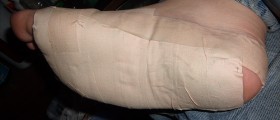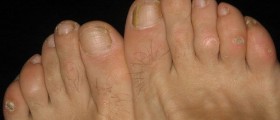
The causes of plantar fasciitis
Plantar fasciitis is a condition where the tissue that is located in the heel and spreads to the toes becomes inflamed. The appearance of plantar fasciitis is most often associated to the irregularities in the structure of the feet, or the arch of the foot, to be more precise. Whether the problem is that the arch is too flat or too high-arched, any kind of extreme can potentially lead to plantar fasciitis. However, there are other causes of plantar fasciitis, such as wearing uncomfortable shoes which do not support the feet very well for long periods of time. This can cause a lot of tension and pain in the feet, thereby causing this condition. Another factor which is included in the formation of plantar fasciitis is obesity.
The symptoms of plantar fasciitis
The main symptom of plantar fasciitis is pain in the heel area, particularly the bottom because that is the part of the heel that touches the ground. The intensity of the pain is particularly strong after getting up from a position of leisure and rest, for example, from the bed in the mornings or from a sitting position. Also, this kind of pain tends to gradually become worse over time.
Diagnosing plantar fasciitis
Determining a diagnosis for plantar fasciitis is not too complicated. What the physician first does is do a routine examination of the foot. He also takes the medical history into consideration and inquires about the kind of pain that the patient is experiencing. This approach is used to rule out all other potential causes of the pain in the heel. Sometimes the use of an x-ray or a similar device is required.
Treating plantar fasciitis
The treatment for plantar fasciitis is usually fairly simple and can be applied at home. For the mildest forms of the condition, no more will be required than doing stretching exercises for the foot, daily application of ice packages, limitation in physical activities, certain pain-relieving medications and possible shoe modifications. However, if the position does not seem to go away even after several weeks of such treatment, one may need to consider receiving additional foot support together with both injection and physical therapy. Finally, the cases in which the patient is unresponsive to any kind of non-surgical treatment and eventually needs to take care of the problem surgically are extremely unlikely.

















Your thoughts on this
Loading...